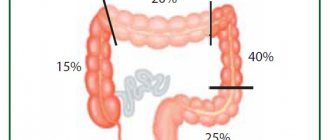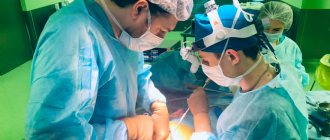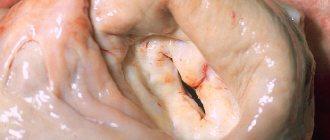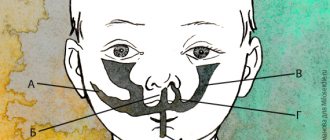Functional diagnostics is an important section of modern medicine. Data obtained using functional diagnostics organically complement the results of studies on the identification of somatic pathologies.
The most common methods are ECG (electrocardiography), spirography (respiratory function test), 24-hour ECG and blood pressure monitoring, EEG (electroencephalography), and stress tests. There are more complex studies that allow you to evaluate respiratory function, brain function, blood circulation, the state of the nervous system, and the heart.
As the name implies, the task of functional diagnostics is to detect various disorders in the work, and not in the condition of organs and systems. This section of diagnostic medicine is resorted to quite often: when there are difficulties in making a diagnosis, in the presence of a chronic or protracted disease, as well as to make an individual prognosis for the course of the disease. And studies such as ECG or EEG were carried out by almost everyone at least once - ECG - during a screening examination or during medical examination, and EEG - at the driver's commission.
Features of functional diagnostics
Doctors know for sure that all systems and organs are interconnected. For example, a change in the functional state of the nervous system entails a variety of symptoms. Often, without proper examination, it is impossible to make an accurate diagnosis.
Functional diagnostics becomes especially important in the case of ineffective treatment for a chronic disease or in the absence of visible somatic pathologies along with persistent patient complaints. Modern methods make it possible to find out how systems and organs cope with the load. Assessing the functional state of the cardiovascular, nervous and respiratory systems are the main objectives of the examinations.
It is extremely important to undergo examination under the supervision of a competent specialist - often the research results do not have an unambiguous interpretation. After all, each body’s systems and organs work differently. To make a diagnosis, you will have to take into account the anamnesis, clinical picture, and the results of functional tests. With the right approach, functional diagnostics allows you to clarify the diagnosis and develop an effective treatment strategy.
Complete training
The Interregional Academy of Industrial and Construction Complex (MASPK) invites students to take professional retraining courses in the field of “Functional Diagnostics”.
The Academy's resources make it possible to remotely train thousands of specialists from all regions of Russia. Our training programs are compiled with the participation of leading experts in their field and are regularly updated, which allows our graduates to successfully implement themselves in the profession. The Interregional Academy of Additional Professional Education (MADPO) conducts regular enrollment in additional professional education courses in the specialty “Functional Diagnostics”. We offer professional retraining and advanced training in a distance format according to an individually agreed schedule, a modern educational and methodological base and standard documents upon completion of training. Training in the “Functional Diagnostics” program at the Medical University of Innovation and Development (MUIR) is a modern educational program for medical specialists that allows you to complete training in the shortest possible time and without interrupting work. The University's courses are delivered both part-time and distance learning and fully comply with both educational and professional standards in the field of additional vocational education (additional vocational education). The National Academy of Modern Technologies (NAST) implements additional education programs and invites specialists to undergo professional retraining in the field of “Functional Diagnostics”. The Academy's training programs involve the use of distance technologies, which allows our students to receive education without interruption from their main activities in the most comfortable mode. The career guidance center for medical personnel of senior and middle management MEDICALEDU invites you to undergo professional training in the specialty “Functional Diagnostics”. Timely receipt of additional professional education allows you to timely pass certification events and continuously improve in your profession. The training format for professional retraining courses is distance learning. Author of the article
Yurkin Alexey
Functional diagnostics in neurology
Electroencephalography (EEG)
- Cost: 2,800 rub.
- Duration: 10-20 minutes
- Hospitalization: Outpatient
More details
Electroencephalography (EEG) is the main diagnostic method in neurology. It consists of recording the electrical potentials of the brain. To conduct the examination, you need to attach electrodes to your head. On average, the study takes no more than 20 minutes. EEG is used in the diagnosis of almost all known functional pathologies of the brain - from tumors and vascular diseases to epilepsy. The method is also used in children to assess the condition of the cerebral cortex. At the CELT clinic, EEG is performed both according to indications and as part of a medical commission for drivers.
Echoencephalogram (EchoEG) is another method of studying the brain. The difference is that this is an ultrasound examination. Allows you to detect pathological changes not only in the cortex or midline structures, but also in the hard-to-reach periosteal space.
At CELT you can conduct functional diagnostics
- Electroencephalography (EEG) - 2,800
- Echoencephalography (EchoEG) – 1,200
Make an appointment
Electroneuromyography (ENMG)
- Cost: 8,400 rub.
- Duration: 30-40 minutes
- Hospitalization: outpatient
More details
Electroneuromyography (ENMG) and electromyography (EMG) are a method of electrophysiological research that allows assessing the usefulness of neuromuscular transmission, the degree of electrical excitability of muscles and the functional state of the peripheral nerve, that is, determining the speed of passage of the nerve impulse, which objectively assesses the function of peripheral nerves and muscles. The method allows us to determine the cause of the disturbance in the interaction of the peripheral nerve and skeletal muscle.
Registration of acoustic brainstem evoked potentials (ASEP)
- Cost: 3,000 rub.
- Duration: 30 – 60 minutes
- Hospitalization: outpatient or up to 2 hours in hospital
More details
Registration of evoked potentials is a group of methods for recording this very activity that occurs in response to targeted stimulation of any receptors: visual (VEP), auditory (or acoustic - ASEP), cutaneous sympathetic (SSEP), somatosensory (SSEP), cognitive and others. Helps assess the functional state of certain centers in the brain and the state of the pathways.
What is the difference between a functional diagnostician and a therapist?
Many patients are confused by the situation when the attending physician or therapist refers him to a functional diagnostics doctor for examinations. This fact usually causes bewilderment, since, in fact, the therapist himself must be a diagnostician; he identifies and records the presence of various diseases. In addition, a functional diagnostician, like a therapist, specializes in the health of the entire human body as a single system.
However, there are serious differences in their qualifications and work methods. Firstly, a diagnostician can be considered such only after additional training and practice in this specialty, in addition to higher medical education. Secondly, this doctor, unlike a therapist, is not involved in prescribing treatment. Specifically, his “element” is precisely the study of the functional characteristics of the body, the analysis and clinical interpretation of the data obtained, and the issuance of conclusions on them. The diagnostician can consult the attending physician and take part in the development of a treatment regimen. Thirdly, the diagnostician not only determines the methods and procedure for examining a particular patient, but can also independently carry out certain types of diagnostics using special medical equipment. In addition, the diagnostician’s knowledge of the technologies used to examine the patient is deeper and more specific.
A doctor, depending on his merits, work experience, knowledge and skills, may be assigned the following qualification categories:
- second;
- first;
- highest.
Functional diagnostics in cardiology
Electrocardiogram (ECG)
- Cost: 1,300 rub.
- Duration: 15 minutes
- Hospitalization: does not require hospitalization
More details
Electrocardiography (or ECG) is the main and most important diagnostic method in cardiology. Despite the fact that this research has been carried out for decades, it has not lost any of its relevance. This is the main purpose for suspected heart attacks, complaints of heart rhythm disturbances, as well as for making a prognosis for any heart disease.
Holter ECG
- Cost: 5,400 rub.
- Duration: 24/48 hours
More details
Daily Holter ECG monitoring is another indispensable method. From the name it is clear that daily monitoring of ECG readings is carried out. Recording for 24 or 48 hours allows you to assess the functioning of the cardiovascular system during the patient’s usual activities. Errors and inaccuracies that may arise from excitement in the hospital during a routine ECG examination or for other reasons are excluded. Main indications: complaints of pain in the heart area, pulse irregularities, frequent fainting. The method allows you to reliably diagnose coronary artery disease, arrhythmia, and determine indications for drug or surgical treatment.
24-hour blood pressure monitoring
- Cost: 3,000 rub.
- Duration: 1 day
- Hospitalization: outpatient
More details
The same method is used for 24-hour blood pressure monitoring (ABPM). Monitoring will require the patient to wear a special device that will record pressure throughout the day. He will have to mark periods of activity and rest, make notes about his health, food intake and medications. In this case, the study turns out to be extremely informative and allows you to diagnose hypertension and hypotension and evaluate the effectiveness of the prescribed treatment.
Stress echo-CG
- Cost: 10,500 rub.
More details
Stress echocardiography (Stress EchoCG) is an ultrasound examination that allows you to diagnose signs of ischemia that appear under conditions of increased stress. The good thing about this method is that it allows you to determine the pathology even before the full clinical picture appears, before the development of coronary artery disease. Allows you to diagnose early manifestations of coronary artery disease, evaluate the effectiveness of treatment, and assess the need for surgical intervention.
Treadmill test
- Cost: 4,900 rub.
- Duration: 30-40 minutes
- Hospitalization: does not require hospitalization
More details
A treadmill test or stress test is an ECG performed during physical activity. Allows you to evaluate the response of the cardiovascular system to physical stress. If you have heart or vascular disease, this test will show the threshold at which the first symptoms appear. In addition, based on the results, it is possible to make a prognosis for the course of the disease and assess the severity of the disease.
Transesophageal atrial stimulation (TEES) is a method that is used to diagnose occult coronary insufficiency in patients with previously diagnosed coronary artery disease. During the examination, a flexible probe is installed in the patient’s esophagus; it is inserted through the nose. The sensation may be uncomfortable, so if necessary, the doctor will treat the root of the tongue with an anesthetic. The thickness of the probe is only a few millimeters, so most patients tolerate this procedure well.
Preparing for the examination
ECG, ECG with exercise, bicycle ergometry, treadmill
- 4 hours before the test, do not eat or drink anything other than water.
- Do not drink or eat anything with caffeine 12 hours before the test.
- Do not take the following heart medications on the day of the test unless your doctor tells you otherwise or the medications are needed to treat chest discomfort on the day of the test: Isosorbide dinitrate;
- Isosorbide mononitrate;
- Nitroglycerine;
You may also be asked to stop taking other heart medications on the day of the test. If you have questions about your medications, ask your doctor. Do not stop taking any drug without first consulting with them.
Spirometry preparation
You should not smoke an hour before spirometry. You should also avoid drinking alcohol on this day. Eating too much can also affect your ability to breathe.
Avoid wearing clothes that are too tight, which may restrict your breathing. Your doctor may also receive instructions about whether you should avoid using inhaled medications or other medications before the test.
EEG preparation
- Avoid anything containing caffeine on the day of the test because it may affect the test results.
- Take your regular medications unless otherwise directed.
Other Precautions
- Wash your hair the night before or on the day of the test, but do not use conditioners, hair creams, sprays or styling gels. Hair products can make it difficult for the clips that hold the electrodes to stick to your scalp.
- If you must sleep during the EEG test, your doctor may ask you to sleep less or avoid sleeping the night before the test.
Electroneuromyography
No special preparation is required for this test.
Respiratory function test
External respiration function
- Cost: 2,200 rub.
- Duration: 10 – 20 minutes
- Hospitalization: Outpatient
More details
In the CELT clinic, to diagnose respiratory diseases, a study of external respiration function is carried out, including an inhalation test. Another name for the method is spirometry. It is quite simple, but at the same time one of the most informative. It is used both to assess the condition of healthy people and in patients with diseases of the respiratory system. Recommended for risk groups: allergy sufferers, people with a predisposition to asthma, and smokers. Spirometry is often prescribed before surgery under endotracheal anesthesia.
In Moscow, a modern department of functional diagnostics operates at the CELT clinic. Expert class equipment, qualified and attentive specialists are the key to an accurate diagnosis and good health.
Contraindications
Functional diagnostic tests have no age restrictions and practically no contraindications. It is not allowed to carry out stress tests during acute infectious diseases. It is also impossible to perform them on patients who are unconscious or do not understand the instructions given. FVD testing is not performed in patients with hemoptysis and pulmonary hemorrhage, acute myocardial infarction, recent stroke, or hypertensive crisis due to the risk of provoking a life-threatening situation.
Certain restrictions on conducting functional studies can create injuries and open wounds in those areas of the body where electrodes need to be applied. The use of needle electrodes for ENMG is not recommended in patients with HIV infection due to the high risk of infection of medical personnel. Performing some diagnostic procedures may be difficult in young children, patients with severe obesity and mental disorders.
The presence of an implantable pacemaker significantly changes the ECG picture, including the ability to mask or imitate ischemic changes. Interpretation of the electrocardiogram in such cardiac patients requires special training of a specialist. If the patient takes any medications on a regular basis (antiarrhythmics, sedatives, bronchodilators, etc.), the specialist conducting functional diagnostics must be warned about this.
Functional diagnostic services at CELT
The administration of CELT JSC regularly updates the price list posted on the clinic’s website. However, in order to avoid possible misunderstandings, we ask you to clarify the cost of services by phone: +7
| Service name | Price in rubles |
| Pulmonary function test | 2 200 |
| Electrocardiography (ECG) before consultation with a CELT cardiologist | 700 |
| Electromyography (EMG) needle | 5 200 |
All services
Make an appointment through the application or by calling +7 +7 We work every day:
- Monday—Friday: 8.00—20.00
- Saturday: 8.00–18.00
- Sunday is a day off
The nearest metro and MCC stations to the clinic:
- Highway of Enthusiasts or Perovo
- Partisan
- Enthusiast Highway
Driving directions
CHOU DPO Institute of Resort Medicine and Tourism
INTRODUCTION………………………………………………………………………………..3
- Trends in the development of functional diagnostics in the Russian Federation
Federations………………………………………………………………………………5
- Review of leading methods of functional diagnostics…………………..13
- Possibilities of modern functional diagnostics
and its limitations……………………………………………………………17
CONCLUSION………………………………………………………………………………….19
REFERENCES……………………………………………………….20
Functional diagnostics is a section of diagnostics, the content of which is an objective assessment, detection of deviations and establishment of the degree of dysfunction of various organs and physiological systems of the body based on measuring physical, chemical or other objective indicators of their activity using instrumental or laboratory research methods. The development of functional diagnostics was a direct consequence and practical expression of the physiological direction, which was established in medicine thanks to the achievements of physiology and the works of major clinicians at the turn of the 19th-20th centuries.
It is known that dysfunction of an organ is not always proportional to the amount of structural changes found in it. For example, severe breathing disorders in bronchial asthma or hemodynamics in hypertension are possible with relatively minor morphological changes. While in case of significant structural damage to the organ, for example, when about 2/3 of the pancreas is replaced by a tumor, clinical signs of its functional failure under normal load conditions may be absent.
Meanwhile, limitations in life activity in various diseases are directly related to disorders of the functions of any organs or physiological systems and are proportional to the degree of these disorders. Therefore, along with the morphological, etiological and pathogenetic diagnosis of the disease, the identification and assessment of the degree of impairment of a specific function is the most important part of the diagnosis and is reflected in the formulated clinical diagnosis of the disease. In healthy individuals, the study of the functional reserves of the body, primarily the respiratory and circulatory systems, is carried out for the purpose of predicting and monitoring individual adaptation of a person to extreme environmental conditions (for example, on polar expeditions), sports loads, during professional selection and medical supervision of submariners, divers, pilots, cosmonauts, etc., and in children and adolescents - in order to monitor the correspondence of the development of physiological systems to age.
The purpose of the study is to study modern functional diagnostics in clinical practice, to determine its new capabilities and limitations.
1. TRENDS IN THE DEVELOPMENT OF FUNCTIONAL DIAGNOSTICS
Modern medical diagnostics are used at all stages of the diagnostic and treatment process from diagnosis and throughout the entire treatment phase, and then as a follow-up. Its capabilities are much greater than those of all modern methods of treatment. If quite recently the attending physician at the patient’s bedside could independently make a preliminary diagnosis and prescribe treatment, now a whole team of diagnostic specialists does this together with him.
And to make constructive decisions for the future, you need to look back. First, it should be noted that the specialty “functional diagnostics” exists only in Russia, or more precisely, in the CIS countries, and has no analogues in the healthcare systems of the European Union countries that signed the Bologna Agreement. And this is not a drawback, but rather an achievement of Russian healthcare, which has translated the discoveries of domestic medical science into clinical practice.
The emergence of independent diagnostic specialties in world and domestic medicine is associated with the great scientific discoveries of the 20th century, some of which were awarded Nobel Prizes. The first of them, the discovery of X-rays by Wilhelm Conrad Roentgen (Decision to award the Nobel Prize on November 12, 1901), served as the basis for the emergence of the specialty “medical radiology” and later “radiation diagnostics”. The second is the development of an apparatus for recording electrical signals of the heart by Willem Einthoven, and the method of “electrocardiography” (Decision to award the Nobel Prize on October 23, 1924).
At the beginning of the twentieth century, Russia was the center of the emergence of several world-famous “physiological” schools, which developed a number of important physiological concepts. Among them, the most famous are the schools of Academician I.M. Sechenov (reflex theory), V.M. Bekhterev (fundamentals of psychophysiology), academician I.P. Pavlov (physiology of digestion, physiology of higher nervous activity), academician V.V. Parin (research on reflex regulation of pulmonary circulation, cardiac physiology), academician P.K. Anokhin (theory of functional systems of the body). The results of scientific research by physiologists were quickly introduced into the work of clinical departments of hospitals and other medical institutions in Russia.
For example, the first Russian Nobel laureate I.P. Pavlov personally contributed to the creation of physiological laboratories at clinics, where clinical and physiological seminars, the so-called famous “Pavlovian Wednesdays,” were regularly held. In the depths of scientific schools, and independently, talented scientists and doctors in alliance with engineers developed new technical devices for research.
The appearance in Russia of a device for measuring blood pressure at the beginning of the twentieth century (1905) developed by the Russian military doctor N.S. Korotkov, became a new impetus for the development of diagnostics.
At the same time, new scientific data on the relationship between the nervous and cardiovascular systems have become widespread (K.M. Bykov, V.Ya. Danilevsky, L.A. Orbeli, V.N. Chernigovsky, N.N. Anichkov, etc.) .
In large surgical clinics under the leadership of famous Russian academicians such as A.N. Bakulev, B.V. Petrovsky, A.A. Vishnevsky, N.N. Burdenko and others, the first specialized laboratories of clinical physiology arose. They were essentially intended to introduce the achievements of experimental science into practice. Here new diagnostic devices appeared, algorithms were developed for conducting research by doctors - “clinical diagnosticians”. In the depths of large scientific surgical centers, new diagnostic information, which was previously obtained invasively during operations, was of particular value.
In therapeutic clinics, the emergence of such diagnostic departments meant the possibility of monitoring the patient’s condition throughout the entire period of treatment, and after discharge from the hospital.
The first functional diagnostics room was organized on the initiative of the head of the department of therapy of the Central Institute for Advanced Medical Studies, Professor D.D. Pletneva. In 1930, on the basis of the MONIKI therapeutic clinic, the first functional diagnostic department was created, and later, in 1932, the first research institute was organized - “Research Institute of Functional Diagnostics and Experimental Therapy”. The first diagnostic rooms, having appeared in the institute's therapeutic clinic, then began to appear everywhere, first in hospitals, and then at the outpatient level, thereby solving the problem of rapid primary diagnosis, primarily of cardiovascular pathology.
President of the USSR Academy of Medical Sciences A.A. In 1945, Bogomolets, at one of the first post-war plenums of the Academy, announced the emergence of a new specialty in Soviet medicine, called “clinical physiology.”
The specialty has firmly occupied its own special niche among other clinical specialties; its “legal successor” has become “functional diagnostics”.
New scientific schools using hardware technologies, primarily in cardiology (A.F. Samoilov, P.E. Lukomsky, A.L. Myasnikov, etc.) contributed to the further development of instrumental diagnostics in the clinic and the emergence of specialized specialists in this field. So, the specialty “Functional Diagnostics”, having arisen as a result of the introduction of the achievements of Russian scientific schools into the clinic, continues its development even now.
The first regulatory document “Regulations on the Electrocardiographic Room”, approved on April 21, 1954 by the Main Directorate of Medical and Preventive Care of the USSR Ministry of Health, marked the beginning of a new stage - the introduction of the first hardware ECG method into widespread medical practice.
At the same time, other methods for studying the heart and blood vessels appeared. All of them were introduced into the practice of functional diagnostic rooms.
The second half of the 20th century was marked by another important event - the advent of ultrasonic devices.
Ultrasound examination of “moving structures” of the heart and blood vessels has become an important addition to existing traditional methods of functional diagnostics, such as ECG, PCG, RVG, etc.
Later, the ultrasonic method replaced some of them. The development of ultrasound methods and the widespread introduction of computer technologies have changed the capabilities and worldview of a functional diagnostics doctor.
Today, the study of the function of the cardiovascular system is carried out with the mandatory use of a complex of functional methods, including ultrasound.
Today, functional diagnostic departments use devices of both domestic and imported origin. During the period of modernization of domestic healthcare and updating of medical equipment, it is appropriate to recall another fact of our history. In the USSR in 1967, the production of domestic medical equipment and instruments was separated into a separate industry. Equipping hospitals, clinics, clinics, and research institutions with sophisticated medical equipment required the involvement of many ministries and departments in this matter.
This was recorded in a number of resolutions of the CPSU Central Committee and the USSR Council of Ministers in 1977-1980. On the initiative of the USSR Minister of Health, Academician B.V. Petrovsky carried out a large amount of work on the creation of domestic medical equipment and instruments, many types of which are still not inferior to the best foreign models. The creation of a special government commission in the USSR, which obliged industrial ministries to develop the necessary apparatus and instruments for the needs of the Ministry of Health, became important for healthcare in general. In accordance with the decree, the ministries were assigned areas of development, which ensured their specialization and coordination of research and development work.
The emergence of a new diagnostic specialty, “functional diagnostics” (FD), was vitally important for the practicing physician. But if its emergence was associated with the introduction into the clinic of the results of research from scientific schools and the emergence of various diagnostic devices, today the opposite situation has arisen, when there is a medical specialty, but no scientific one.
The lack of a scientific specialty “functional diagnostics” deprives the possibility of further harmonious development of all instrumental diagnostic areas.
Without the possibility of scientific comprehension and analysis, without the formulation of diagnostic research concepts in the form of master's and doctoral dissertations, it is impossible to talk about the future of any direction in medicine. However, there is one convincing fact that this problem will be solved. This fact is the formation in 1996 of the Russian Association of Functional Diagnostics Specialists (RASD). By this time, in the depths of the scientific and medical community of PD specialists, the idea of uniting into a public organization was born in order to solve current theoretical, scientific and practical problems, determine priority directions for the development of PD, and protect the rights and professional interests of members of the Association.
An initiative group of specialists from scientific organizations that include large PD departments: MONIKI, RMAPO, MMA named after. Sechenov, RKNPK (Cardiocenter) - the draft Charter of “RASFD” was prepared, and the first documents were prepared for registration of a new public organization.
At the same time, the quarterly peer-reviewed journal of the RASFD “Functional Diagnostics” was established. The chief freelance specialist of the Ministry of Health of the Russian Federation, head of the department of functional diagnostics of MONIKI, Professor Sergei Sergeevich Koltsun, was elected the first President of the Association.
Thus, the history of the development of our specialty is twice connected with the Moscow Research Institute of Clinical Medicine named after. F.M. Vladimirsky, where for the first time in 1932 the Research Institute of Functional Diagnostics and Experimental Therapy was organized (under the leadership of Professor D.D. Pletnev).
The first composition of the RASFD Council included: Beresten N.F., Dyachenko T.Yu., Ivanov G.G., Kechker M.I., Makareva N.M., Rogoza A.N., Ryabykina G.V., Sakhno Yu.F., Fedorova S.I. The audit commission included: Pronina V.P., Massarygin V.V., Laskarzhevskaya M.A.
Today, not only doctors, but also leading specialists of Russian scientific organizations are concerned about the current situation. RASFD, at each conference since 1997, has included in the resolution a decision on the need to recreate the scientific specialty “Functional Diagnostics”. It is necessary to include the specialty “Functional Diagnostics” in the list of scientific medical clinical specialties (Order of the Ministry of Education of the Russian Federation of February 25, 2009 No. 59 “On approval of the nomenclature of specialties of scientific workers”).
The scientific specialty “functional diagnostics” should contribute to the study of the functional state of organs and systems of the human body in normal conditions and in pathology using various instrumental methods. This step will lead to an influx of new personnel into the specialty, and new opportunities will appear in mastering and studying the mechanisms of formation of pathological processes studied using various technologies.
This decision will also lead to the re-creation at a qualitatively new level of what was once organized by Professor D.D. Pletnev – Research Institute of Functional Diagnostics and Experimental Medicine.
This step is important for all departments of functional diagnostics of medical universities that do not have clear guidelines for training highly qualified PD specialists for practical medicine.
The importance of developing functional diagnostics as a scientific specialty is also confirmed in the Project “Strategies for the development of medical science in the Russian Federation for the period until 2025”, developed by the Ministry of Health of the Russian Federation, the Russian Academy of Medical Sciences, the Russian Academy of Sciences, Moscow State University. M.V. Lomonosov in accordance with Decree of the President of the Russian Federation of May 7, 2012 No. 598 “On improving state policy in the field of healthcare.”
The document on scientific directions of functional diagnostics states that “a new generation of functional diagnostic methods will be created based on multifunctional monitoring of patients in real life conditions; new stress tests to detect coronary heart disease using new technologies for obtaining and analyzing the electrical field of the heart (microalternation PQRST and other existing or new ones); complex diagnostic systems using methods for studying the electrical field of the heart in combination with various imaging methods and constructing corresponding electromechanical models of the myocardium.
The creation of new methods for identifying preclinical damage to target organs and prognostically unfavorable dysregulatory changes in the cardiovascular system, adapted to the requirements of preventive medicine, and their widespread implementation in practice will make it possible to diagnose cardiovascular diseases in the early stages...”
2. REVIEW OF LEADING METHODS
Functional diagnostics currently serves as a good aid for the clinician in making a diagnosis. The equipment and methods themselves are being improved every year, and the field for diagnostics is expanding. The clinician can study the functioning of the organ and obtain more information than is available to the senses: the eyes when examining a patient, the ear when performing auscultation, etc.
The study can be carried out on healthy individuals or to diagnose certain diseases. In healthy individuals, functional tests are carried out to assess the function of organs or systems before complex expeditions, business trips, or work that requires great physical and mental effort. To diagnose diseases, a specialist is referred for a specific test.
Method for recording electrical potentials of the heart. Einthoven was the first to conduct experiments on recording electrical impulses of the heart. In 1924, he was awarded the Nobel Prize in Medicine or Physiology for the creation of the first ECG machine.
Typically, the ECG is recorded in 12 leads: 3 standard leads, 3 enhanced leads and 6 chest leads. Additional leads are used to diagnose myocardial infarction of the posterobasal sections of the left ventricle (unipolar or bipolar according to the Sky). The recording is made in a calm state of the patient with normal breathing. First, standard leads are recorded on film, then reinforced leads and chest leads.
Holter monitoring ECG / HM-ECG / “Holter” - the method allows you to record ECG potentials throughout the day. The subject keeps a diary in which he records episodes of physical activity, emotional stress, anxiety, and food intake. Marks the time at which this event occurred. The patient’s complaints (pain in the heart area, interruptions in heart function, rapid heartbeat, etc.) are also recorded in the diary. The recording is then transcribed using a computer program, and the results are compared with the entries in the diary. Based on the data obtained, the doctor makes the correct diagnosis.
The principle is the same as the “holter”. During the day, the patient wears a device that measures his blood pressure at specified intervals. Using the same principle, the patient keeps a diary. There are some additional rules. While measuring blood pressure, the patient's hand should remain motionless. For example, if the device starts to work while walking, you need to stop and extend your arm along your body. When measuring blood pressure at rest, you must follow all the rules that are established for measuring pressure with a conventional tonometer. Indications: “white coat” hypertension, hypertension in combination with other heart diseases, symptomatic hypertension, diagnosis of hypotensive conditions, correction of drug treatment methods. In the outpatient department, devices are used for non-invasive measurement of blood pressure using the auscultatory or oscillometric method.
An invasive method of measuring blood pressure is used in cardiac surgery.
For diagnosis, the average result of systolic, diastolic and pulse blood pressure, pressure variability and frequency of increase above the figures of 140 and 80 mmHg are important. or decrease to 90 and 60 mmHg or less.
Electroencephalography is a method for studying the biopotentials of the brain. EEG is recorded using electrodes placed on the head. There are two ways of recording EEG - monopolar and bipolar. The bipolar method makes it possible to detect pathological formations in the brain (for example, tumors) by recording the potential that arises between two active electrodes. The monopolar method of EEG recording makes it possible to study oscillations and their amplitude, assess brain activity, and diagnose dystrophic and degenerative diseases of the brain.
Electroneuromyography
The method allows you to study the function of excitable tissues, which include nervous and muscle tissue. The condition of the entire path that the nerve impulse travels is assessed: starting from the roots of the spinal cord and ending with the neuromuscular synapse. This technique allows you to distinguish between damage to a muscle, neuron or pathway. It may be useful in diagnosing demyelinating diseases.
Spirography is a method for studying the function of external respiration. Tidal volume, forced expiratory rate, residual air volume after maximum exhalation and other indicators are measured. In addition, you can conduct a test with bronchodilators and evaluate how the spirogram readings will change.
The test is valuable in diagnosing bronchial asthma and chronic obstructive pulmonary diseases.
3. POSSIBILITIES OF MODERN FUNCTIONAL
Currently, new computer electrocardiographs are being installed in hospitals in the department of functional diagnostics. Modern equipment is designed to conduct ECG studies. Unlike a classic electrocardiograph, which produces the examination result as a printout on thermal paper, a computer electrocardiograph transmits the patient’s electrocardiogram to a computer via a local network in the department of functional diagnostics and stores it digitally in a database. To analyze the ECG, the department has connected workstations of doctors, who make a conclusion within a few minutes.
A computer electrocardiograph is a complex consisting of an ECG module, a computer with software for recording, analyzing, storing and transmitting an ECG.
Previously, to decipher the electrocardiogram, it was necessary to deliver it to the doctor, which took time. Now ECG studies of patients from hospital departments and clinics will be sent to specialists of the functional diagnostics department in real time.
Until recently, the result of an ECG examination was pasted into the patient’s chart. It took time to find the necessary entries in the map and compare them with each other. In addition, thermal paper printouts faded over time and became unreadable. With the advent of computer technology, research results are in electronic form, which eliminates the storage of an archive of paper films. New electrocardiograms can be printed on regular office paper.
Also among the advantages of modern equipment that is operating in the hospital today in test mode is ECG visualization. When a doctor writes a conclusion not based on a printout by visual analysis, but has the opportunity to enlarge the image of the electrocardiogram on the monitor screen and display several ECGs for comparison.
CONCLUSION
A functional diagnostics doctor provides qualified specialized care in his area of expertise. He conducts research into the function of a particular system of the human body using special equipment to determine the state of organs and tissues, determine pathological conditions in the early stages of development, and their characteristics.
The doctor examines patients before surgery, during certain stages of medical examination, pregnant women during routine examinations, etc. Large hospitals have functional diagnostic departments. In smaller ones there is a functional diagnostics room.
The study of the functional ability of a particular organ is important when examining both an adult patient and a child. Functional methods allow you to answer a number of questions. Firstly, the results of the study are used to judge how the disease affects the function of an organ or system. Secondly, based on certain parameters, we can judge the compensatory capabilities of the body. Thirdly, by testing with medications or some other influences (physiotherapy, physical activity, etc.), we help the patient choose an adequate treatment and regimen. And finally, by conducting dynamic monitoring of the patient with repeated functional examination, the doctor can judge the effectiveness of treatment, carry out timely correction of treatment and rehabilitation measures, and often predict the course of the disease.
- Kondrashin A.V., Karasev V.S. Functional diagnostics of an adaptive control system: problem statement and its solution // Izvestia YuVU. – 2021. – No. 8 (181). – pp. 79-88.
- Prokofiev A.B., Rudnev S.G., Marinin V.F., Kukes I.V. The importance of modern methods of functional diagnostics in clinical studies of drugs used in cardiological practice // Bulletin of the Scientific Center for Expertise of Medical Products. – 2014. – No. 3. – P. 19-23.
- Sokolov A.A. Echocardiography and functional diagnostics // Siberian Medical Journal (Tomsk). – 2021. – T. 22. – No. 3. – P. 54-58.
- Functional diagnostics: textbook / comp. Ozhev B.V. – Maykop: MSTU Publishing House, 2015. – 64 p.










